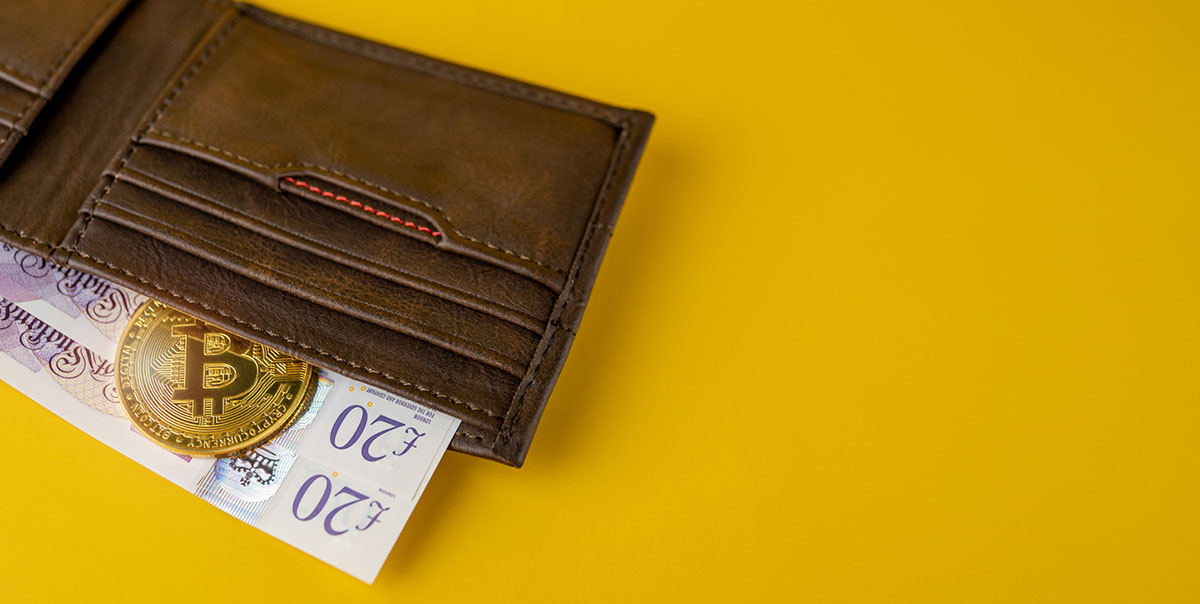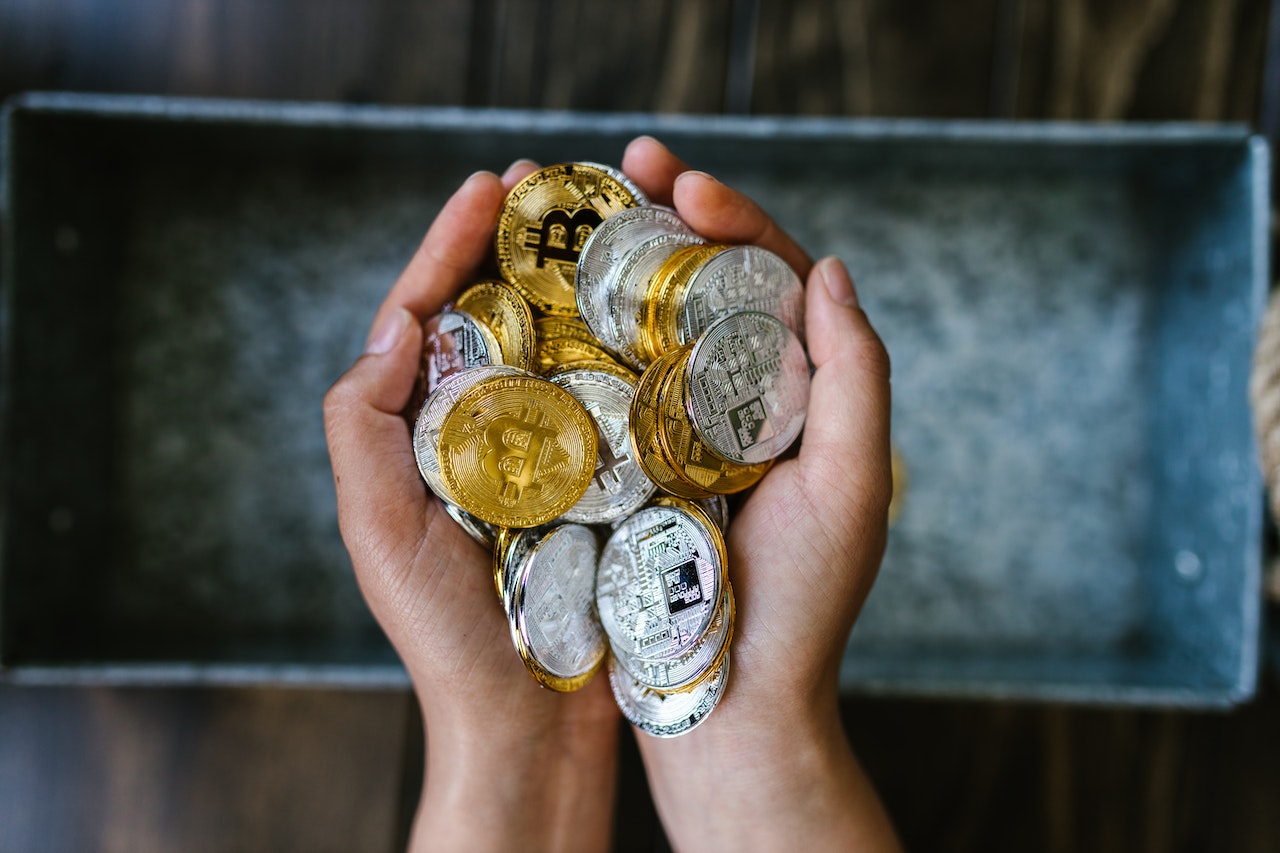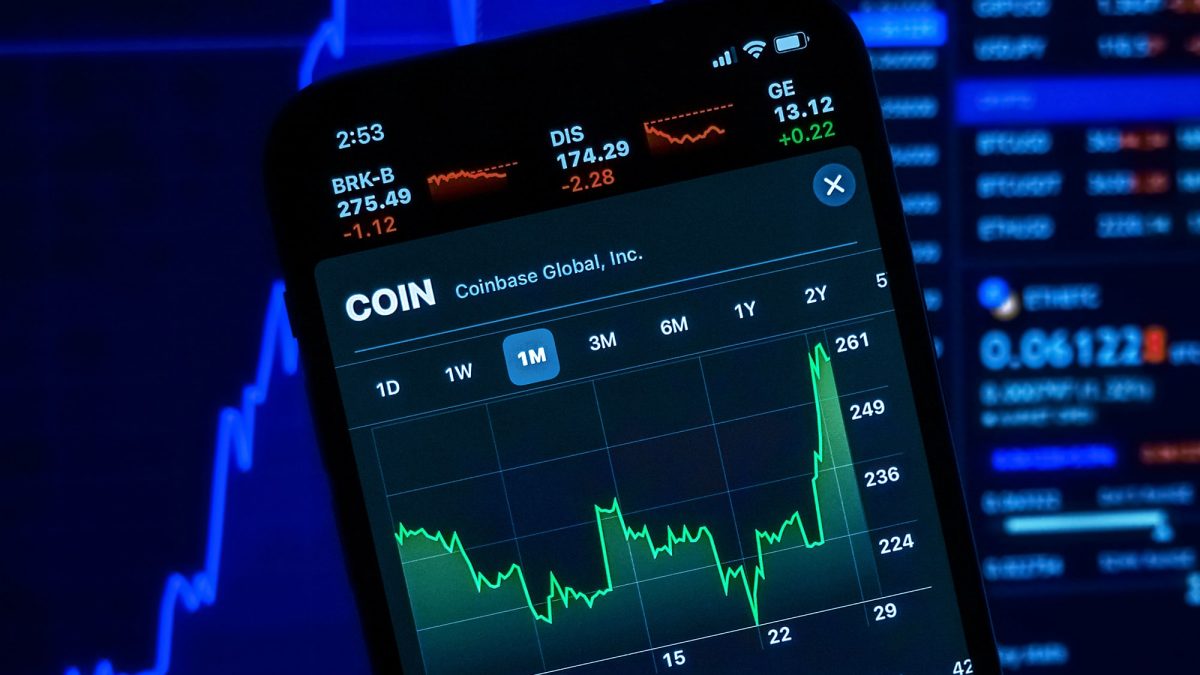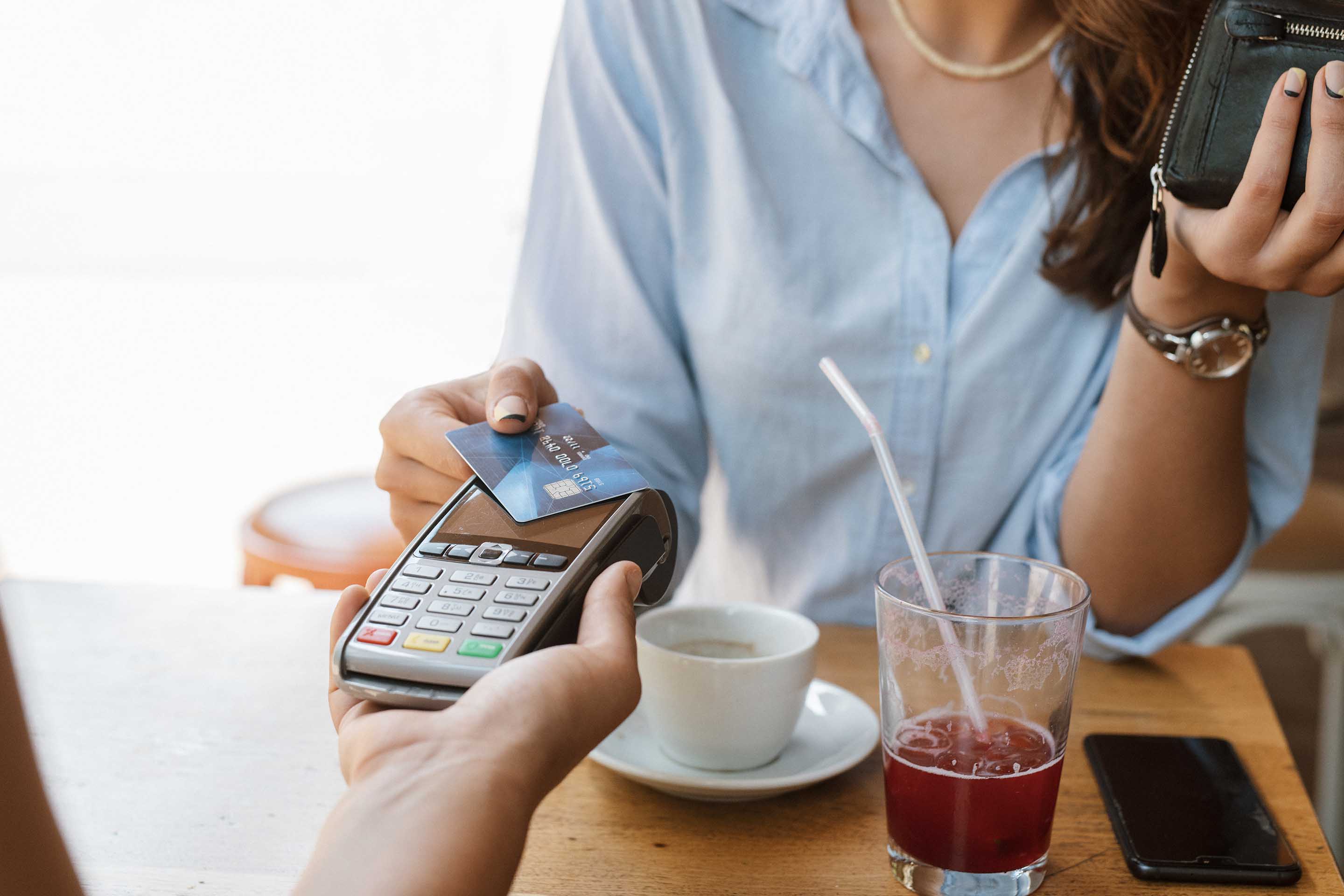

Finance
How To Recover Stolen Cryptocurrency
Published: October 5, 2023
Learn how to recover stolen cryptocurrency in this comprehensive guide. Protect your finances and regain control over your digital assets with our expert tips and strategies.
(Many of the links in this article redirect to a specific reviewed product. Your purchase of these products through affiliate links helps to generate commission for LiveWell, at no extra cost. Learn more)
Table of Contents
- Introduction
- Steps to Take Immediately After Discovering the Theft
- Reporting the Theft to Authorities
- Gathering Necessary Information for the Investigation
- Contacting Cryptocurrency Exchanges and Wallet Providers
- Tracing the Stolen Cryptocurrency
- Working with Law Enforcement Agencies
- Recovering Stolen Cryptocurrency through Legal Processes
- Preventive Measures to Protect Cryptocurrency Assets
- Conclusion
Introduction
Cryptocurrency theft is a growing concern in the digital world. As the popularity and value of cryptocurrencies such as Bitcoin, Ethereum, and Litecoin rise, so does the risk of theft. Hackers and malicious actors are constantly finding new ways to exploit vulnerabilities in wallets, exchanges, and other platforms to steal digital assets. If you have fallen victim to cryptocurrency theft, it is crucial to act swiftly and take the necessary steps to recover your stolen funds. In this article, we will guide you through the process of recovering stolen cryptocurrency and provide useful tips to prevent future theft.
Discovering that your cryptocurrency has been stolen can be a devastating experience. The first step you should take is to remain calm and gather your thoughts. Panicking or acting impulsively can lead to further complications. It’s essential to approach the situation with a clear and level-headed mindset. By following the appropriate steps, you can increase your chances of recovering your stolen funds and holding the responsible individuals accountable.
It’s important to note that recovering stolen cryptocurrency can be a complex and time-consuming process. It may involve working with law enforcement agencies, coordinating with cryptocurrency exchanges, and navigating legal procedures. The outcome of the recovery efforts can vary depending on the circumstances and jurisdiction involved. However, by taking the right actions and following the correct procedures, you can significantly improve your chances of successfully recovering your stolen cryptocurrency.
Steps to Take Immediately After Discovering the Theft
Discovering that your cryptocurrency has been stolen can be a distressing moment. However, it’s crucial to act quickly and decisively to minimize further damage and increase the chances of recovering your stolen funds. Here are the steps you should take immediately after discovering the theft:
- Change Your Passwords: The first step is to change the passwords for all your cryptocurrency accounts and related platforms. This includes your wallet, exchange accounts, and any other platforms where you store or transact with your digital assets. Use strong, unique passwords that are not easily guessed and consider enabling two-factor authentication for added security.
- Secure Your Devices: It’s important to ensure that your devices, such as computers, smartphones, and tablets, are secure. Update your operating system and all applications to the latest versions to protect against known vulnerabilities. Run a thorough antivirus scan to detect and remove any malware from your devices.
- Take Screenshots and Document Evidence: Before contacting authorities or reporting the theft, gather evidence of the theft. Take screenshots of any suspicious activity, such as unauthorized transactions or account access. Document all relevant details, including dates, times, and any additional information that may aid in the investigation.
- Contact the Police: Report the theft to your local law enforcement agency as soon as possible. Provide them with all the necessary information, including evidence of the theft and any relevant details you have documented. Remember to obtain a copy of the police report, as it may be required for future steps in the recovery process.
- Notify the Cryptocurrency Exchange: If the theft involves an exchange account, inform the exchange immediately. Provide them with details of the theft, including transaction IDs, wallet addresses, and any other relevant information. The exchange may be able to freeze the stolen funds or assist in tracing their movement.
- Contact Your Wallet Provider: If your digital assets were stored in a wallet, contact the wallet provider to report the theft. Provide them with all the necessary details and inquire about their security measures or any assistance they can offer in recovering the stolen funds.
- Monitor the Blockchain: Keep a close eye on the blockchain to track the movement of your stolen funds. Use blockchain explorers and monitoring tools to identify any transactions involving your cryptocurrency. This information can be valuable for the investigation and recovery process.
By taking these immediate steps, you can begin the process of recovering your stolen cryptocurrency and increasing the chances of holding the perpetrators accountable. However, it’s essential to recognize that recovering stolen funds can be a complex and time-consuming process, requiring patience and perseverance.
Reporting the Theft to Authorities
Once you have discovered the theft of your cryptocurrency, it is crucial to report the incident to the appropriate authorities. By involving law enforcement agencies, you improve the chances of recovering your stolen funds and potentially bringing the responsible individuals to justice. Here are the steps to follow when reporting the theft to authorities:
- Contact Your Local Police: Start by reaching out to your local police department or law enforcement agency. Provide them with all the relevant information about the theft, including the date and time of the incident, the amount and type of cryptocurrency stolen, and any supporting evidence you have gathered. It is important to be as detailed and accurate as possible when providing this information.
- File a Police Report: When speaking with the police, ask them how to file an official police report for the cryptocurrency theft. A police report serves as an important document that officially documents the crime and provides a basis for further investigation. Be prepared to provide personal identification information and any supplementary documentation they may require.
- Cooperate with the Authorities: Once you have filed a police report, cooperate fully with the investigating officers. Answer their questions truthfully and provide any additional information they may request. It is important to maintain open lines of communication with the authorities to facilitate the investigation process.
- Share Information from the Blockchain: If you have been monitoring the blockchain for any movement of your stolen cryptocurrency, share this information with the authorities. It can provide valuable leads and help track the flow of funds, leading to potential identification and recovery of your stolen assets.
- Stay Informed of the Investigation: Keep in touch with the investigating officer or department to stay updated on the progress of the investigation. Ask for any updates or developments related to your case, and share any new information or leads that come to your attention. By staying involved, you can ensure that your case remains a priority for the authorities.
Reporting the theft to authorities is a crucial step in the process of recovering stolen cryptocurrency. While it may require patience and cooperation, involving law enforcement agencies increases the likelihood of success and sends a clear message that cryptocurrency theft is a serious offense that will not go unpunished.
Gathering Necessary Information for the Investigation
When it comes to recovering stolen cryptocurrency, gathering and organizing the necessary information is key to assisting law enforcement agencies in their investigation. By providing them with detailed and accurate information, you increase the chances of identifying the perpetrators and recovering your stolen funds. Here are the essential steps for gathering the necessary information for the investigation:
- Compile Transaction Details: Gather all the transaction details related to the theft. This includes the wallet addresses involved, transaction IDs, dates, and times of the unauthorized transactions. Having a complete record of the transactions will help law enforcement agencies track the movement of your stolen funds on the blockchain.
- Document Communication with Exchanges or Wallet Providers: Keep copies of all correspondence and communication with cryptocurrency exchanges or wallet providers regarding the theft. This includes emails, support tickets, and any other relevant communication. These records can be used as evidence and provide insights into the security measures or actions taken by the service providers.
- Obtain IP Addresses and Device Information: If you have access to the IP addresses associated with the theft, provide them to the authorities. This information helps pinpoint the location of the attackers or provides leads for further investigation. Additionally, provide details of the devices you use for cryptocurrency transactions, such as computer models, operating systems, and any associated device identifiers.
- Retrieve Login History: Retrieve the login history for your cryptocurrency accounts. This includes any IP addresses, dates, and times of previous logins. Identifying any suspicious logins or unauthorized access can aid in determining how the theft occurred and provide leads for the investigation.
- Provide Supporting Evidence: Gather any other supporting evidence or documentation related to the theft. This may include screenshots of suspicious activity, account statements, or any additional information that helps establish a chain of events or provides context for the theft.
By gathering and organizing this information, you provide law enforcement agencies with a solid foundation for their investigation. It is crucial to be thorough and accurate when collecting and documenting the details, as every piece of information can potentially contribute to the recovery and resolution of the theft.
Contacting Cryptocurrency Exchanges and Wallet Providers
When your cryptocurrency has been stolen, reaching out to the relevant cryptocurrency exchanges and wallet providers is an important step in your efforts to recover your funds. These platforms may have security measures and protocols in place to assist with investigating and potentially freezing the stolen assets. Here are the steps to take when contacting cryptocurrency exchanges and wallet providers:
- Notify the Exchanges: If your stolen cryptocurrency was held on an exchange account, contact the exchange immediately. Provide them with detailed information about the theft, including the transaction IDs, wallet addresses involved, and any other relevant details. Most exchanges have dedicated support channels or customer service departments that handle cases of theft or unauthorized access. Follow their instructions for reporting the incident and be prepared to provide any additional information they may require.
- Request Assistance in Freezing Funds: Ask the exchange if they can freeze the stolen funds. While cryptocurrency transactions are typically irreversible, some exchanges have the capability to freeze or restrict the movement of funds in certain situations. By freezing the stolen assets, you can prevent the perpetrators from cashing out or transferring the funds, increasing the chances of recovery.
- Cooperate with Exchanges’ Security Teams: Cryptocurrency exchanges often have dedicated security teams that investigate incidents of theft or unauthorized access. Cooperate fully with their inquiries and provide any requested information or documentation. These security teams may have access to additional resources and expertise to aid in the recovery process.
- Contact Your Wallet Provider: If you stored your cryptocurrency in a wallet, reach out to the wallet provider and inform them about the theft. Provide them with details of the incident and inquire about any security measures or assistance they can provide. While wallets generally offer more limited options for recovering stolen funds compared to exchanges, they may be able to offer guidance or support in the recovery process.
- Follow Up Regularly: Stay in regular contact with the exchanges and wallet providers throughout the investigation process. Inquire about any updates or progress related to your case and provide any new information or leads that come to your attention. By actively engaging with them, you demonstrate your commitment to recovering your stolen funds, and they may prioritize your case accordingly.
Contacting cryptocurrency exchanges and wallet providers is an important step in the recovery process. While the outcome may vary depending on the platform and the circumstances, seeking their assistance increases the chances of freezing the stolen funds and potentially recovering your assets.
Tracing the Stolen Cryptocurrency
Tracing the movement of stolen cryptocurrency is a critical step in the recovery process. By tracking the flow of funds on the blockchain, you can potentially identify the addresses and entities involved in the theft. While tracing stolen cryptocurrency can be challenging due to the pseudonymous nature of blockchain transactions, there are steps you can take to increase the chances of identifying the perpetrators and recovering your stolen funds.
- Follow the Transactions: Start by closely monitoring the blockchain transactions associated with your stolen cryptocurrency. Use blockchain explorers and monitoring tools to track the movement of funds from the wallet address where the theft took place. Record all the wallet addresses and transaction IDs involved in these transfers.
- Analyze Transaction Patterns: Analyze the transaction patterns to look for any suspicious behavior or connections. Look for transfers to known mixer services or exchanges that may be used to obfuscate the origin of the stolen funds. Identify any wallets or addresses that receive multiple transactions from different sources, as they may be holding the stolen funds.
- Utilize Blockchain Forensics Tools: Consider employing the services of blockchain forensics firms that specialize in tracing stolen cryptocurrency. These firms have advanced tools and techniques to analyze blockchain data and identify wallets associated with illicit activities. They can provide valuable insights and potentially assist in recovering your stolen funds.
- Collaborate with Law Enforcement: Share the information you gather from tracing the stolen cryptocurrency with law enforcement agencies working on your case. This information can aid in their investigation and potentially help track down the perpetrators. Provide them with transaction details, wallet addresses, and any other relevant information you have collected.
- Seek Cooperation from Exchanges: Reach out to cryptocurrency exchanges that have received or processed transactions involving your stolen funds. Provide them with the transaction details and ask for their cooperation in identifying the individuals or entities behind these transactions. Some exchanges may be willing to assist law enforcement in their efforts to recover the stolen cryptocurrency.
- Consider Reward Programs: In some cases, offering a reward for information leading to the recovery of stolen cryptocurrency can incentivize individuals with knowledge of the theft to come forward. Promote the reward program through social media, online forums, and other relevant channels to maximize its visibility. Ensure that the terms and conditions of the reward program are clear and that the reward is offered only after the successful recovery of the stolen funds.
The process of tracing stolen cryptocurrency can be complex and challenging, requiring specialized knowledge and resources. It is crucial to collaborate closely with law enforcement agencies and seek professional assistance to maximize your chances of successfully identifying the perpetrators and recovering your stolen funds.
Working with Law Enforcement Agencies
Collaborating with law enforcement agencies is a crucial step in recovering stolen cryptocurrency. By involving the authorities, you can benefit from their investigative resources and expertise in dealing with cybercrimes. Here are the key points to consider when working with law enforcement agencies:
- Provide Comprehensive Information: Supply law enforcement agencies with all the relevant information regarding the theft, including the police report, transaction details, wallet addresses, and any evidence or documentation you have collected. The more comprehensive and detailed your information, the better equipped they will be to investigate the case.
- Maintain Regular Communication: Keep in constant contact with the assigned officer or investigator handling your case. Stay updated on their progress, provide any new information or leads that may arise, and be responsive to their inquiries. Effective communication ensures that the investigation remains active and that your case remains a priority.
- Work with Cybercrime Units: Collaborate specifically with cybercrime units or departments within law enforcement agencies that specialize in handling digital crimes. These units have the expertise and knowledge required to investigate cryptocurrency theft and cybercriminal activities effectively.
- Cooperate Across Jurisdictions: If the theft involves multiple jurisdictions, coordinate with law enforcement agencies in each jurisdiction. International cases may require mutual legal assistance treaties or other forms of cross-border cooperation. Be prepared to provide any necessary documentation or information to facilitate communication and cooperation between the involved jurisdictions.
- Seek Legal Advice: Consult with a lawyer experienced in cryptocurrency and cybercrime cases. They can provide legal guidance, help you understand your rights and obligations, and assist in navigating any legal hurdles that may arise during the recovery process. A lawyer can also help ensure that your interests are protected throughout the investigation.
- Follow Law Enforcement’s Instructions: Cooperate fully with law enforcement agencies and comply with their instructions and requests. They may require additional documentation, interviews, or other forms of cooperation. By following their guidance and demonstrating your willingness to assist, you enhance the effectiveness of the investigation.
- Be Patient: Recovering stolen cryptocurrency can be a lengthy process, and investigations take time. Be prepared for delays and unexpected obstacles. Patience is key during this time, as it may involve gathering evidence, obtaining court orders, and working through legal procedures.
Remember that law enforcement agencies have limited resources and handle various cases simultaneously. By providing thorough information, maintaining communication, and cooperating fully, you improve the chances of recovering your stolen cryptocurrency and bringing the responsible individuals to justice.
Recovering Stolen Cryptocurrency through Legal Processes
Recovering stolen cryptocurrency through legal processes can be a complex and challenging endeavor. However, there are legal avenues that you can pursue to increase the chances of recovering your stolen funds. Here are some legal steps to consider:
- File a Lawsuit: In some cases, filing a lawsuit against the perpetrators can be an option for recovering stolen cryptocurrency. Consult with a lawyer experienced in cryptocurrency and cybercrime to determine if legal action is a viable course of action in your situation.
- Seek Court Orders: Obtain court orders that can help freeze the stolen funds or compel cryptocurrency exchanges, wallet providers, or other relevant entities to provide information about the theft. These court orders may require the involvement of legal professionals and can vary depending on your jurisdiction.
- Work with Forensic Experts: Engage the services of forensic experts who specialize in cryptocurrency investigations. These experts can analyze blockchain data, trace the movement of your stolen funds, and potentially uncover valuable evidence that can aid in the legal process.
- Coordinate with Law Enforcement: Continually collaborate with law enforcement agencies and provide them with any necessary assistance during the investigation. They can guide you through the legal processes, help obtain necessary court orders, and work on your behalf to recover the stolen cryptocurrency.
- Consider Asset Recovery Firms: Explore the option of engaging asset recovery firms that specialize in cryptocurrency theft. These firms utilize their expertise, contacts, and legal resources to assist in recovering stolen funds. Be cautious and thoroughly research the credibility and track record of any asset recovery firm before engaging their services.
- Stay Informed of Legal Developments: Stay up to date with any legal developments or precedents related to cryptocurrency theft and recovery in your jurisdiction. Changes in legislation or court rulings can impact the legal options available to you.
- Maintain Documentation: Keep meticulous records of all communication, evidence, and legal steps taken throughout the process. These records serve as crucial evidence and can help substantiate your claims during legal proceedings.
Recovering stolen cryptocurrency through legal processes can be a complex and challenging journey. It requires the expertise of legal professionals and often involves collaboration with law enforcement agencies. While success is not guaranteed, pursuing legal avenues can provide you with a chance to hold the perpetrators accountable and potentially recover your stolen funds.
Preventive Measures to Protect Cryptocurrency Assets
Taking preventive measures to protect your cryptocurrency assets is crucial in minimizing the risk of theft and safeguarding your digital funds. By implementing best practices and adopting secure practices, you can significantly reduce the likelihood of falling victim to cryptocurrency theft. Here are some preventive measures to consider:
- Choose a Secure Wallet: Use a reputable and secure wallet to store your cryptocurrency. Opt for wallets that offer strong encryption, two-factor authentication, and offline storage options. Research and choose a wallet that has a proven track record of security.
- Enable Two-Factor Authentication (2FA): Enable 2FA on all your cryptocurrency accounts and associated platforms. Two-factor authentication adds an extra layer of security by requiring a second form of verification, such as a unique code generated by a mobile app, in addition to your password.
- Use Strong, Unique Passwords: Create strong passwords for all your cryptocurrency-related accounts and platforms. Avoid reusing passwords and consider using a reputable password manager to generate and store complex passwords securely.
- Perform Regular Software Updates: Keep all your operating systems, wallets, and other cryptocurrency-related software up to date. Regularly update the software to patch any known vulnerabilities and protect against potential security risks.
- Implement Cold Storage: Consider using cold storage or offline wallets for long-term storage of your cryptocurrency. Cold storage keeps your private keys offline and away from potential hackers or malicious actors.
- Be Wary of Phishing Attempts: Beware of phishing attempts, where scammers impersonate legitimate websites or platforms to trick you into revealing your login credentials or private keys. Always double-check the URL, be cautious of unsolicited emails or messages, and never share sensitive information with unknown sources.
- Educate Yourself: Stay informed about the latest security threats and best practices in the cryptocurrency industry. Regularly read reputable sources of information, join cryptocurrency communities, and engage in discussions to enhance your knowledge and awareness.
- Diversify Your Investments: Consider diversifying your cryptocurrency holdings across multiple wallets or exchanges. This mitigates the risk associated with a single wallet or exchange being compromised or experiencing a security breach.
- Use Hardware Wallets: Hardware wallets provide an additional layer of security by storing your private keys offline on a dedicated device. Consider investing in a hardware wallet to store your cryptocurrency securely.
- Backup Your Wallet: Regularly back up your wallet and store the backup in a safe and secure location. This ensures that you can recover your funds in case of a hardware failure, loss, or theft.
By implementing these preventive measures, you can significantly enhance the security of your cryptocurrency assets. While no security measure is foolproof, staying vigilant and proactive in protecting your funds is key to safeguarding your digital assets from theft.
Conclusion
Cryptocurrency theft is a serious concern in the digital world, but there are steps you can take to recover stolen funds and protect your assets going forward. Acting swiftly and methodically after discovering a theft is essential, including changing passwords, securing devices, and gathering necessary information for the investigation. Reporting the theft to authorities and collaborating with law enforcement agencies is crucial in increasing the chances of recovering stolen cryptocurrency. Tracing the movement of the stolen funds with the help of forensic experts and working with exchanges can also aid in the recovery process.
Recovering stolen cryptocurrency through legal processes can be challenging, but filing a lawsuit, seeking court orders, and communicating regularly with law enforcement can be worthwhile steps to take. Additionally, implementing preventive measures, such as using secure wallets, enabling two-factor authentication, and staying vigilant against phishing attempts, can significantly reduce the risk of future theft.
It is important to note that recovering stolen cryptocurrency is a complex and often time-consuming process that may not always guarantee success. However, by taking the appropriate measures and working with the relevant authorities and professionals, you can increase the chances of recovering your stolen funds and holding the responsible parties accountable.
Remember, prevention is key. By implementing strong security practices and staying informed about the latest threats and best practices, you can protect your cryptocurrency assets and reduce the risk of falling victim to theft. Stay vigilant, stay informed, and take the necessary steps to safeguard your digital wealth.














